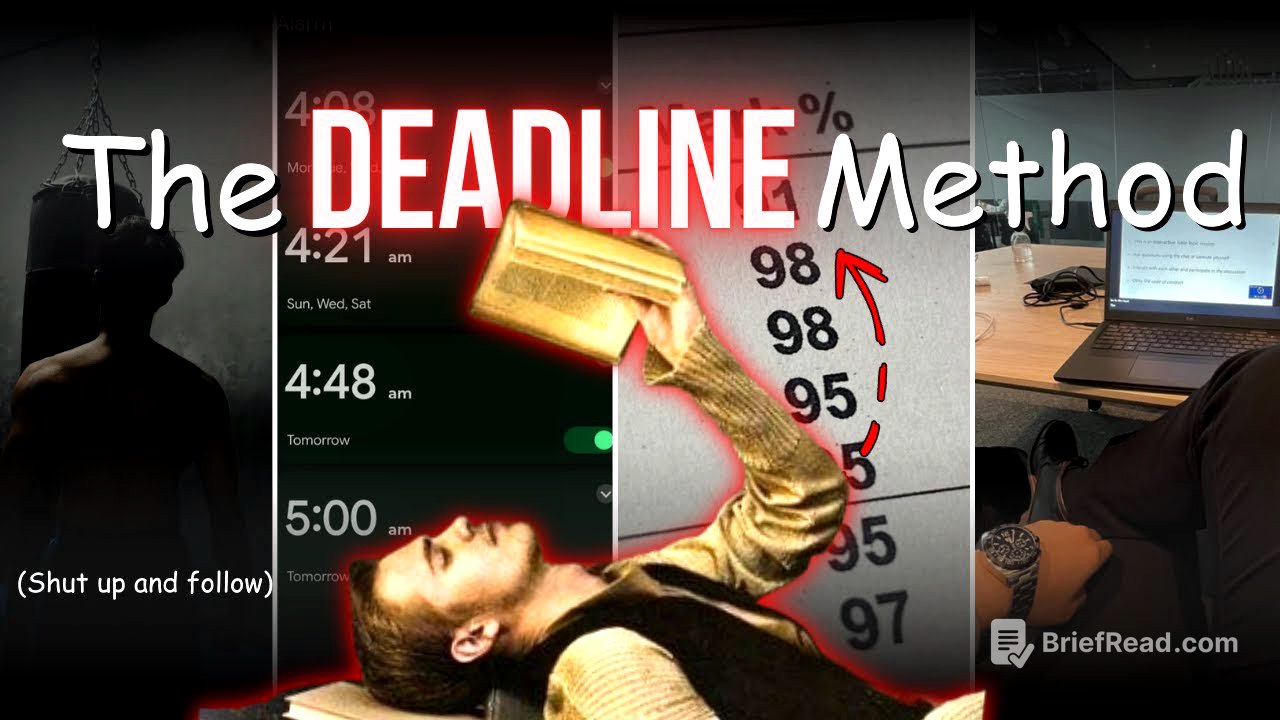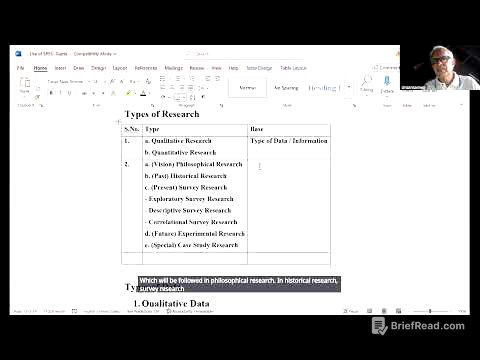TLDR;
This video introduces the "deadline method" as a powerful tool to overcome procrastination and boost productivity. It argues that setting drastically shorter deadlines than initially perceived can trigger a state of heightened focus and efficiency. The method involves picking a task, setting a tight deadline (3-5 times shorter than expected), and breaking it down into micro-steps to start immediately.
- Short deadlines eliminate perfectionism.
- Tight deadlines trigger survival mode in the brain, boosting focus.
- The method weaponizes the brain's addiction to last-minute rushes.
Introduction: Stop Planning, Start Executing [0:00]
The video addresses the common problem of over-planning and under-executing, where individuals spend excessive time on to-do lists and productivity tips without actually completing tasks. It criticises taking excessive time to complete simple tasks and highlights that high performers manipulate time effectively. The core message is that the key to success lies in execution, not just planning. The "deadline method" is introduced as a simple yet effective strategy used by top performers to achieve peak productivity.
The Deadline Method: Three Simple Steps [0:46]
The deadline method is presented as a straightforward productivity technique consisting of three steps. First, select a task that you've been putting off. Second, set a deadline that is three to five times shorter than what you think it should take. For example, if you believe an assignment requires three days, give yourself only 12 hours. Third, break the task into small, manageable steps and begin working on it immediately.
Why the Deadline Method Works [1:29]
The video explains the psychological reasons behind the effectiveness of the deadline method. Short deadlines eliminate perfectionism by forcing you to prioritise completion over flawlessness. These deadlines trigger a survival mode response in your brain, unlocking intense focus. The method also leverages Parkinson's Law, which states that work expands to fill the time allotted. By setting shorter deadlines, you compress the work into a smaller timeframe without sacrificing quality. Furthermore, it utilises the brain's natural inclination for last-minute rushes, turning it into a productive advantage.
Applying the Deadline Method to Your Life [2:34]
Practical advice is given on how to implement the deadline method in your daily life, whether for studies or work. When faced with a task that has a distant deadline, create an internal, much sooner deadline and stick to it. Use a visible countdown timer to create a sense of urgency. Combine this method with the "253 method" (from a previous video) for optimal productivity, allocating specific time blocks for different phases of work: two hours for the hardest part, five hours for the bulk, and three hours for polishing. It's important to schedule breaks after meeting the deadline, not before, to reinforce completion.
Overcoming Resistance and Achieving Flow [3:43]
The video acknowledges the initial panic and resistance that may arise when implementing the deadline method. It encourages viewers to push through the first 20 minutes, after which they are likely to enter a flow state where time seems to blur. The quality of work will improve due to the constraints fostering creativity and decisiveness.
Next Steps and Additional Resources [4:07]
The video suggests trying the deadline method for a few days and tracking progress. It teases the next video, which will focus on boosting focus. Additionally, a free newsletter with actionable self-improvement tips is announced, encouraging viewers to subscribe for daily or bi-daily mindset shifts and habit transformations.









